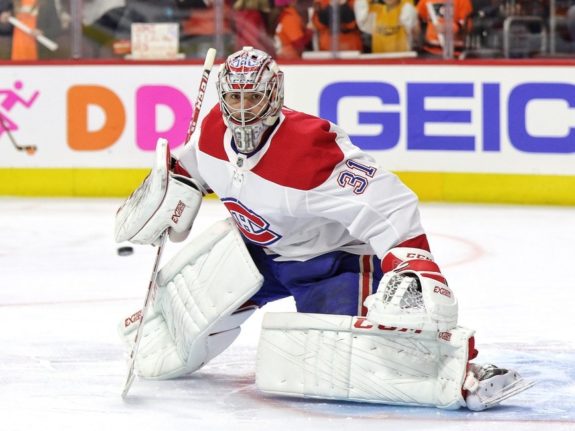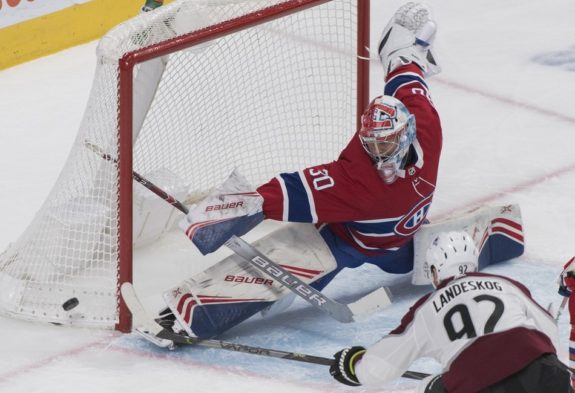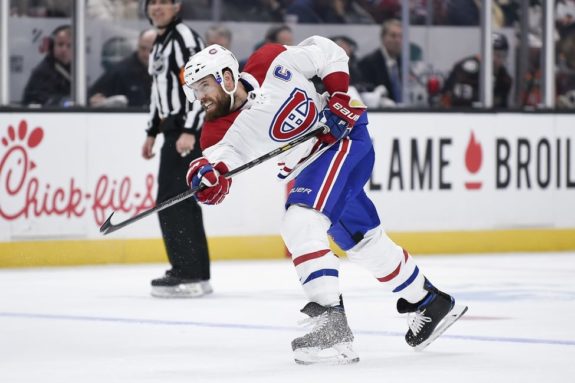Finding a balance is always difficult. When it comes to balancing youth and experience on an NHL roster, Montreal Canadiens general manager Marc Bergevin has shown that to be the case. As the season wore on, the team needs were apparent, help at center for the young core, depth on defense to insure against injuries. The trade deadline arrived, and Bergevin added help and depth by acquiring more veteran help.
After the Canadiens returned from COVID-19 protocols, it was apparent the reliance on the veterans has caused the Habs to play a slower, more conservative style from the one that showed such promise at the start of the season.
Injury Bug
The compressed schedule is pointed to often. The final 25 games were needed to be scheduled over 42 days. That would be an average of four games every week; a pace NHL players are not accustomed to sustaining. While schedule issues are a problem for all teams, it is important to understand what a team is dealing with when assessing any issues.
There was a growing concern the team would slide out of a playoff position, causing a once-promising season to become a disaster for the fans and management. Then, likely because of the compressed schedule, injuries to key players began to occur.
Shea Weber, Paul Byron, and Tomas Tatar are out day to day with minor injuries. Brendan Gallagher is out until the playoffs with a broken thumb, Carey Price suffered a concussion and Jonathan Drouin is out indefinitely due to personal issues. That’s six key players on a lineup that was struggling.

The injuries, coupled with a condensed schedule, could have signaled the downfall of the Canadiens this season. However, it provided them exactly what they needed, an injection of youthful energy.
Ducharme Forced to Rely on Youth
The rash of injuries forced head coach Dominique Ducharme to juggle his lineup. During the month before April 28, before this forced adjustment, he relied heavily on his veterans for ice time; it was also evident the team was fatigued. Unable to win consecutive games, they held a record of six wins and 10 losses. They could not sustain offensive pressure averaging 2.06 goals for per game (GF/G) with an anemic power play (PP) that only scored 11.6% of the time. Defensively they played a static, stay-at-home style defense that was often trapped in its own zone. They allowed 3.31 goals against per game (GA/G) with a penalty kill (PK) that could only defend 77.3% of the time.
Due to salary cap constraints and the use of three of his four regular call-ups – NHL teams after the trade deadline are only allowed to use four call-ups from the Taxi Squad- Bergevin created a situation where making roster moves based on merit was nearly impossible. With the injuries, they used emergency recalls to call up Cayden Primeau, Jake Evans and Cole Caufield. Then, the final recall was used to add Alexander Romanov.

At the time, the Habs held a two-point lead in the standings for fourth place over the Calgary Flames and were going to face the Scotia North division-leading Toronto Maple Leafs. Since that 4-1 loss to Toronto, the Canadiens seemed to have salvaged their season. In that week, they have a record of three wins, one loss.
The defense has become far more reliant on their mobility and quick puck movement like they had at the start of the season, which is a major difference from the more physical, grinding style they had used for the month before these adjustments. This has netted the team positive results and may have saved the season.
This renewed mobility has allowed the transition game to reawaken, providing dramatic improvements at both ends of the rink. Offensively, they have improved to an average of 3.0 GF/G and a PP that scores 33.3% of the time. The consistent puck movement and forecheck have returned and are providing the Canadiens timely scoring. Defensively they have improved as well, with the puck consistently moving towards the offensive zone, it becomes easier to defend their own end of the ice. The improved defensive scheme has allowed 2.75 GA/G, over half a goal per game difference. On special teams, the PK has improved by over 12 points to kill 90% of the penalties taken.
Young Guns
Leading the charge has been a resurgent Nick Suzuki, who has averaged over 18 minutes per game while scoring three goals and eight points in the last four games. He has readjusted to the intensity of the games at this point in the season and has provided the Canadiens the level of play needed to be a top-line center. His creativity has been on full display on the PP as well. His ability to shoot forces defenders to defend against it, allowing him to open passing lanes. His passing abilities force defenders to readjust to defend the pass. His hockey IQ has allowed him to take advantage of their momentary indecisions to generate scoring chances.
Caufield is another bright spot for the youth. In his short time on the roster, he has generated the highest number of high danger scoring chances on the team, his expected goals for (xGF) is above 65%, meaning that 65% of the time, he and his linemates are in the offensive zone generating shots on net. This has quite a lot to do with his ability to forecheck, he worked on his game away from the puck and it has shown in the advanced stats.

But having the puck on his stick is still where Caufield shines. He has become the first player in NHL history to score his first two NHL goals in overtime in back-to-back games.
Difficult Decisions Await
As the Canadiens approach the playoffs, the injured veterans are scheduled to return. Ducharme will face a difficult choice of how to reintegrate them into a successful lineup and game plan.
Price is an easy fit, and if he’s at the top of his game and rested again, he will start. At forward, it will become difficult to keep Caufield in the lineup without removing a veteran player. Will the youngster be moved into a fourth-line role, or will he be scratched to fit in players such as Corey Perry and Artturi Lehkonen?
The blue line is where the key decisions will be made. Once Weber returns, it is evident he will need to have his time on ice and role managed. As my colleague Trege Wilson has covered, Weber is no longer the team’s top pairing right-handed defender; he also needs to have a young, mobile defenceman to be paired with. Ducharme will be tempted to return to pairing him with Ben Chiarot, yet, to keep the current efficiency of the defensive scheme, he should remain with pairing a responsible veteran with a mobile puck-moving defender.

Special teams are another major aspect. Since the youth have taken over, the PP has looked dangerous and is scoring on every third opportunity. While Weber’s slap shot is still a weapon, his presence on the PP has become a focal point not just for defenders but also for the Habs. There seems to be a desire to rely on that one weapon to the detriment of the PP. Once they needed to adjust to life without Weber on the PP, they used more puck movement and used different shooting locations and players to keep defenders guessing.
On the PK, it may be a function of sample size as well, however, the added mobility has allowed Montreal to be more aggressive in closing the gap with the puck carriers. This has taken away time and space to make a decision, allowing defenders to gain possession and clear their zone quickly, cutting down on shots against while short-handed.
The future is starting to crash on the shores for fans to see. A flood of young players called up to the NHL roster, a wave of youth in the minors, another following behind in development leagues. NHL systems built around the speed, skill and mobility of today’s younger generation of players breed more success than the more static styles seen during the pre-lockout era. There is now a steady flow of skilled youth in the Canadiens’ system, and the onus is now on management and the coaching staff to balance youth and veterans.